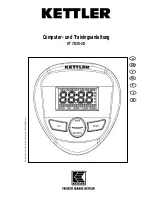
3
3.
MIDI Channels
MIDI performance data is assigned to one of sixteen MIDI channels.
Using these channels, 1–16, the
performance data for sixteen different instrument parts can be simultaneously sent over one cable.
For example,
when you play a song on your keyboard, the song contains many parts—right-hand part, left-
hand part, rhythm part, bass part, etc. On most instruments, different MIDI channels are assigned automatically
to each part. When this MIDI song is transmitted to another instrument via a MIDI cable, each part is transmit-
ted simultaneously, yet over separate channels.
Part (track) of
your instrument
MIDI Transmit
Channel
MIDI Receive
Channel
Track of instrument
receiving MIDI data
Right-hand part
Ch. 1
Ch. 1
Track 1
Left-hand part
Ch. 2
Ch. 2
Track 2
:
:
:
:
Rhythm 1 part
Ch. 9
Ch. 9
Track 9
Rhythm 2 part
Ch. 10
Ch. 10
Track 10
Bass part
Ch. 11
Ch. 11
Track 11
:
:
:
:
:
Ch. 16
Ch. 16
Track 16
MIDI instrument
MIDI transmit
MIDI cable
MIDI OUT
MIDI IN
MIDI sequencer






















